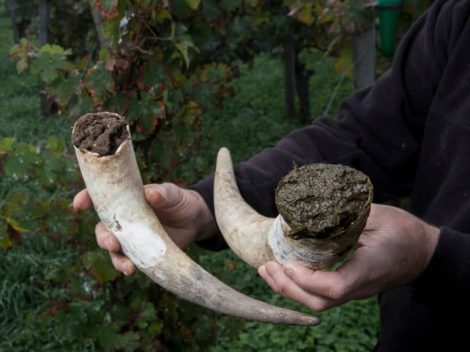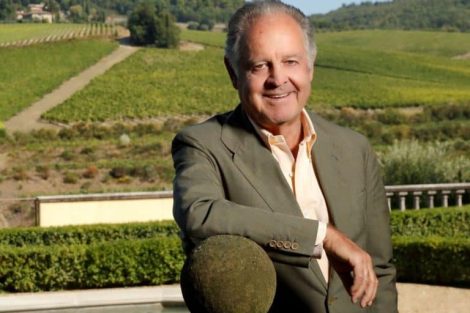Climate change, a wine sales crisis exacerbated by inflation as well as ongoing wars, and alarms on multiple fronts: the global wine sector is certainly not facing the rosiest of scenarios. Yet, as the saying goes, when the going gets tough, the tough get going. And so it is for a small Tuscan appellation like DOC Cortona, determined to leave its mark on the history of Italian viticulture and currently poised to make its biggest leap forward: opening up to the world and international markets.

Cortona, a corner of the Rhône in Tuscany
This territory is a French enclave, a small Rhône Valley nestled in Tuscany, where Syrah reigns supreme. The clay-based soils of the Val di Chiana, with deposits of silt, sand, and schist, have proven ideal for a grape variety that dislikes highly calcareous soils.
Within just a few decades since the creation of the Consorzio di Tutela at the dawn of the new millennium, Syrah has become the emblem of Cortona. Its consistently high-quality production has triggered a virtuous cycle, also bolstering niche productions of other varieties, from Sangiovese to renowned international grapes like Merlot and Cabernet Sauvignon. Today, the vineyards registered under the DOC cover a total area of 400 hectares, producing approximately 450,000 bottles per year. Syrah accounts for 80% of the bottled wine.
Syrah in Cortona in the late 1800s
There is much information regarding the arrival of this grape and its origins. According to the most credible accounts, its progenitors are French: a genomic study of its DNA traces it back to the Rhône Valley.
Claims of its origins from other locations (such as the Italian city of Syracuse) stem instead from erroneous transcriptions of the grape’s name over the centuries. (This topic is extensively covered in specialised texts on agriculture, housed in the La Vigna library in Vicenza.)
It is believed that one of the first to bring Syrah to Tuscany was Giulio Magnani, then-owner of Fattoria Marchi Magnani (later Cantina Mazzini), around 1870. He travelled to France to study the vineyards and winemaking techniques there. Visiting Bordeaux, he brought Sauvignon, Semillon, Merlot, Cabernet Franc, and Cabernet Sauvignon back to Montecarlo. From the Rhône region, he introduced Roussanne and Syrah, and from Burgundy, Pinot Blanc and Pinot Gris.
The wines from Fattoria Marchi Magnani (particularly the whites, which, when blended with local Trebbiano, became known as the “Tuscan Chablis”) even graced the royal wedding of Prince Umberto of Savoy and Maria José at the Quirinal Palace in 1930. However, Syrah-based wines in Cortona are only documented from the 1960s, when major wineries such as Tenimenti d’Alessandro, Antinori, and Avignonesi rediscovered traces of it in their vineyards. They decided to resume cultivation and conduct deeper studies into its genomic origin.

Prof. Attilio Scienza and analysis of the grape
With the help of Professor Attilio Scienza and the University of Milan, meticulous research into the characteristics of Cortona’s soil and climate began in the early 1970s. The study culminated in the planting of an "experimental" vineyard, where various Syrah varieties and clones were tested to identify the best fit for the local microclimate. This study also highlighted the similarity between Cortona's climate and that of the Rhône coast.
Tuscan Syrah and markets in Italy and abroad
Generally, 70% of the production is sold domestically, with the remaining 30% exported, barring isolated cases. Over the past three years, producers report efforts to build customer loyalty, and some wineries have increased sales by up to 10%.
The European market, such as in Germany, has remained stable, while there have been some positive signals from the US and UK. Expansion is noted in Asia, particularly in Singapore and Hong Kong, with growing interest from Taiwan and Thailand for some wineries.
What has mattered most—especially post-Covid—is the adaptability of producers. They’ve made their operations more dynamic, sometimes losing ground in one area but finding new commercial opportunities where they could skillfully position themselves.
A change in style: vintners led by Stefano Amerighi
Positive results are also tied to a significant stylistic change in this relatively young wine. Over the last 10 years, and particularly in the past five, a group of visionary producers led by Stefano Amerighi has made a powerful impact.
Amerighi even made the cover of Revue du Vin de France. His Syrah was featured alongside the world's most prestigious, such as Hermitage by Domaine Jean-Louis Chave, Syrahs from Domaine Jamet Côte-Rôtie, Pierre Gonon, Alain Graillot, and Cornas Clape, to name just a few Rhône giants. This was a significant recognition not only for Italy but especially for Cortona, which Amerighi—the "bohemian spirit" of Tuscan wine and leader of the appellation—has guided to the top of the international stage, alongside the great terroirs of "Syrah du monde."
In Cortona, wine is produced in a region rich in human diversity, with winemakers committed to leaving a mark of presence and maturity. Study, research, experimentation, and passion have led producers away from overly powerful wines marked by extreme ripeness, concentration, and heavy use of new oak. Instead, they now focus on more personal interpretations, where the fruit takes centre stage, favouring clarity, precision, vibrancy, lively progression on the palate, and juicy tannins.
Responding to the climate crisis: Syrah shows resilience
Undoubtedly, climate change has significantly impacted this area, with intense heat peaks and diminishing rainfall alongside unpredictable, catastrophic events that have become increasingly concerning in parts of Tuscany over the past two years.
Yet, Syrah proves resilient—more autonomous and seemingly "prepared" to handle sudden stresses, responding well to the inevitable challenges. As with all well-managed viticulture, vineyard management increasingly makes the difference: where care and preparation are applied, good results shine through in the wines.
Cortona's Future: a mall DOC with big aspirations
“I hope that in this challenge of ours, we can set aside the Tuscan spirit of wanting everything immediately,” explains Stefano Amerighi, who also serves as the president of DOC Cortona.
“As a dear friend of mine once said, ‘If you don’t suffer, you can’t play the blues.’ That’s the perspective we need to adopt and the motivation we need to harness. Enthusiasm is still crucial because the times are discouraging: besides international problems, the world is drinking less, younger generations are more health-conscious, and many other factors are at play.
"However, we have the fortune of being small artisans, and this can only help us."
Isn’t the fragmented size a limitation?
“What's essential,” Amerighi responds, “is understanding how committed the territory is to growing further. There are few of us winemakers, and the hectares are limited.
"But the greatest achievement in recent years has been seeing many growers turn to winemaking, producing more DOCG and less IGT: a truly heroic journey when you consider we started from Bianco Vergine di Valdichiana. The vision was to embrace single-variety wines alongside blends, with a decisive focus on territorial characterisation and high-quality levels.
"We’re building an engine that’s shifting gears: the first gear has been engaged, and now we’re seeing its development. Tenimenti d’Alessandro, Antinori, Avignonesi have given us a major push.
"When our DOC was born, many others emerged too, but not all have had our strength. Cortona has managed to rally, and each winery has embarked on its own path, especially as there wasn’t a clear model to follow.
"This has led, since 2019, to a stronger focus on Syrah production, with renewed energy and vigour. Now, we need to look to the future: the internationalisation of the denomination is key. It’s a long-term project, requiring decades, but I’m optimistic: if we work together, those who come after us will reap the rewards.
"And when people think of great Italian Syrah, they will automatically think of Cortona.”



 Historical breakthrough: Italy will also produce dealcoholised wines. Lollobrigida signs the decree
Historical breakthrough: Italy will also produce dealcoholised wines. Lollobrigida signs the decree The Game (and the misunderstanding) of dealcoholised wines: even an expert critic can be fooled at first sip
The Game (and the misunderstanding) of dealcoholised wines: even an expert critic can be fooled at first sip With fish, you can (also) drink red!
With fish, you can (also) drink red! The story of the pharmacist who dispenses prescriptions by day and crafts gourmet burgers by night
The story of the pharmacist who dispenses prescriptions by day and crafts gourmet burgers by night It's time for light Prosecco: the lower-alcohol version is the latest innovation in record-breaking bubbles
It's time for light Prosecco: the lower-alcohol version is the latest innovation in record-breaking bubbles






